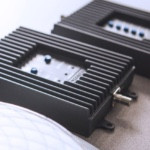
Attenuation: How It Affects Your Cell Phone Signal & What You Need To Know About It
Posted by Dennis Findley on 8th Mar 2017
Why It Happens, And How To Prevent It.
Alright, boys and girls it’s time to get those thinking caps on and ready as we will be getting into some technical aspects of cellular signal boosters in this blog post. We will be specifically talking about Attenuation.
Attenuation is a very important word when it comes to properly setting up any cellular signal booster. But what exactly IS attenuation? According to Techopedia, attenuation is a reduction in signal strength commonly occurring while transmitting analog or digital signals over long distances. In simpler terms, according to TechTarget, attenuation is a general term that refers to any reduction in the strength of a cellular signal. It is also referred to as “loss”. So, how does this reduction in signal affect a cellular signal booster?
In SureCall systems, there is a difference between Attenuation and Automatic Gain Control (AGC). Attenuation restricts the cell signal to allow for manual configuration while AGC adjusts the booster automatically to compensate for signal fluctuations. Attenuation is also different from XDR (Extended Dynamic Range) which automatically attenuates the booster’s incoming signal reception if it is too great. There are two different ways to adjust the amount of resistance the signal booster creates. They are manual and automatic and they both have different advantages and disadvantages.
Manual Attenuation
This is regulated in a few different ways. These include, but are not limited to, inline attenuators, coax cable, dials and dip-switches. On a SureCall booster like the Force5, there are dip-switches that control the uplink and the downlink separately. Uplink is what goes from the cell phone to the carrier tower and downlink is what comes from the carrier tower and goes into the cellphone. One of the advantages to having these dip-switches is the ability to create what is called “asymmetrical gain”. This means you can reduce the amount of incoming signal without sacrificing indoor cellular coverage to remedy things like overpowering and inadequate separation.
Manual attenuation also helps you control indoor coverage. That means you can put a larger booster with higher capacity allowances in a smaller area. Manual attenuation also adds value to the installer’s services by requiring a greater knowledge to configure the booster properly. This is also a disadvantage to manual attenuation; it can often be intimidating to see switches or dials on a booster. It is also time consuming to configure the booster if it requires manual attenuation. In addition, it’s harder to compensate for external cellular signal changes like new cell sites being created close to the booster. However, SureCall has a way to remotely monitor and adjust the booster’s attenuation levels called the Sentry Remote Monitoring System.
Automatic Attenuation
This is accomplished through software. This makes installing cell signal boosters with automatic attenuation quick and easy. The disadvantage to relying on software to automatically adjust both gain and attenuation is that you cannot control how much cellular coverage area you get with the booster. Also, if your booster automatically attenuates, proper separation is a must.
While there are advantages and disadvantages to both manual and automatic attenuation, it is nice to know that there are choices when it comes to cellular signal boosters. For larger applications, the ability to configure the booster is a distinct advantage. For those interested in installing boosters themselves, a cellular signal booster with automatic attenuation like the Fusion5X might be a better fit. As always, if you have questions, don’t hesitate to get in touch with someone here at SureCall. We're always here to help.
